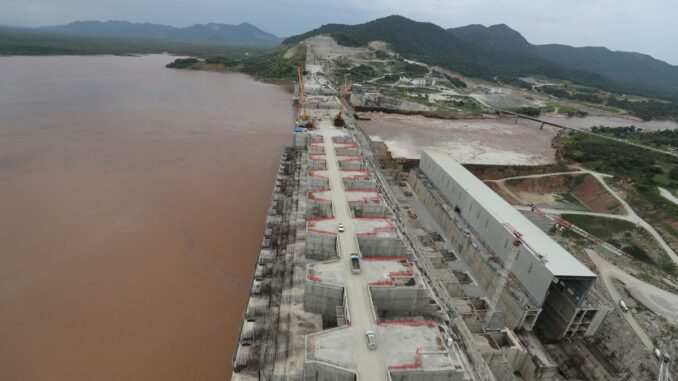
Ethiopia announced on Monday, July 19, the end of the filling of its controversial large dam known as the “Renaissance Dam” (GERD). This filling had started quietly at the beginning of the month, despite warnings and concerns from Sudan and Egypt. And despite the lack of agreement between the three major riparian countries on the exploitation of the Nile’s water. But now the dam will be prepared for the first production of electricity, Addis Ababa said.
Exceptional rains have recently fallen on the Blue Nile springs region of Ethiopia. As a result, the filling of the huge Renaissance Dam has been rapid, explained the Minister of Water, Irrigation and Energy, Seleshi Bekele. The reservoir has reached the overflow facilities and is also flowing through the lower gates wide open, he explained on Twitter.
The next step will be the start of electricity generation “in the next few months,” he added, probably initially at 750 megawatts – about one-fifth of the national output – of the 5,000 megawatts planned once the project is completed.
Ethiopia’s goal has been achieved despite tensions with its neighbors, because what has not been achieved is for Addis Ababa to come to an agreement with Khartoum and Cairo on the use of the river’s flow and on the related legal rights.
Ethiopia will not budge. It wants to stick to the initiative of the Congolese presidency, which is trying hard to set up a three-way summit to settle the issue under the aegis of the African Union alone. But Sudan and Egypt want broader involvement, including from the UN.
